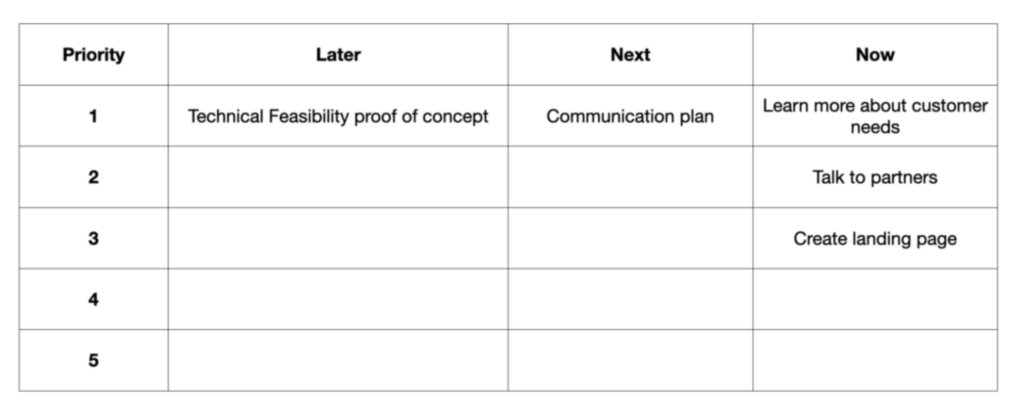A now, next, later roadmap
The purpose of the roadmap is to create alignment in the team and organization of what lies ahead on the longer perspective (months and years).
The roadmap should include the big things. Planning on a weekly and daily basis should be in another document (backlog or Kanban)
A roadmap can be described in different formats, either by priority or by date. As innovation is complex and often changing we will describe a roadmap that is based on priority. In the simplest form a roadmap has three states – now, next and later plus a priority.
Exampe of an roadmap
Tesla example case
Now
Open up stores in Norway to increase support network
Open up factory in Germany for European market
Next
Tesla Home battery to lower price on batteries
Solar roof growth to create eco system in customer lock-in
Tesla truck
Later
Increase charging network in Europe increased accessibility
Tesla’s propensity for vertical integration and technological
innovation to reuse technology for other industries
Material
Whiteboard, post-its and
pens or similar online
Time frame
1-2 hours
Number of people
Core Team
Prepare
Make a document, digital or analogue with a matrix and put now, next and later in the columns (see image above) or similar online solution like Mural or Trello)
Book workshop with team
Prepare everything you know you need to do on a long term. Think big activities that take weeks or months. Write these things on paper, post-its or similar. (why do it, what to do, size)
Workshop
Start the discussion with the team – what is most important? Put the activities in the Now column. Try to have a maximum of 5, you don’t want to work on too many things at once.
Put all the activities you need to do next, in the Next column
Put all the activities you need to do later, in the Later column.
Re-arrange the things you need to do depending on what the team think is most important.
Use the activities to move things up and down in the columns, most important at the top.
When done, document the result

